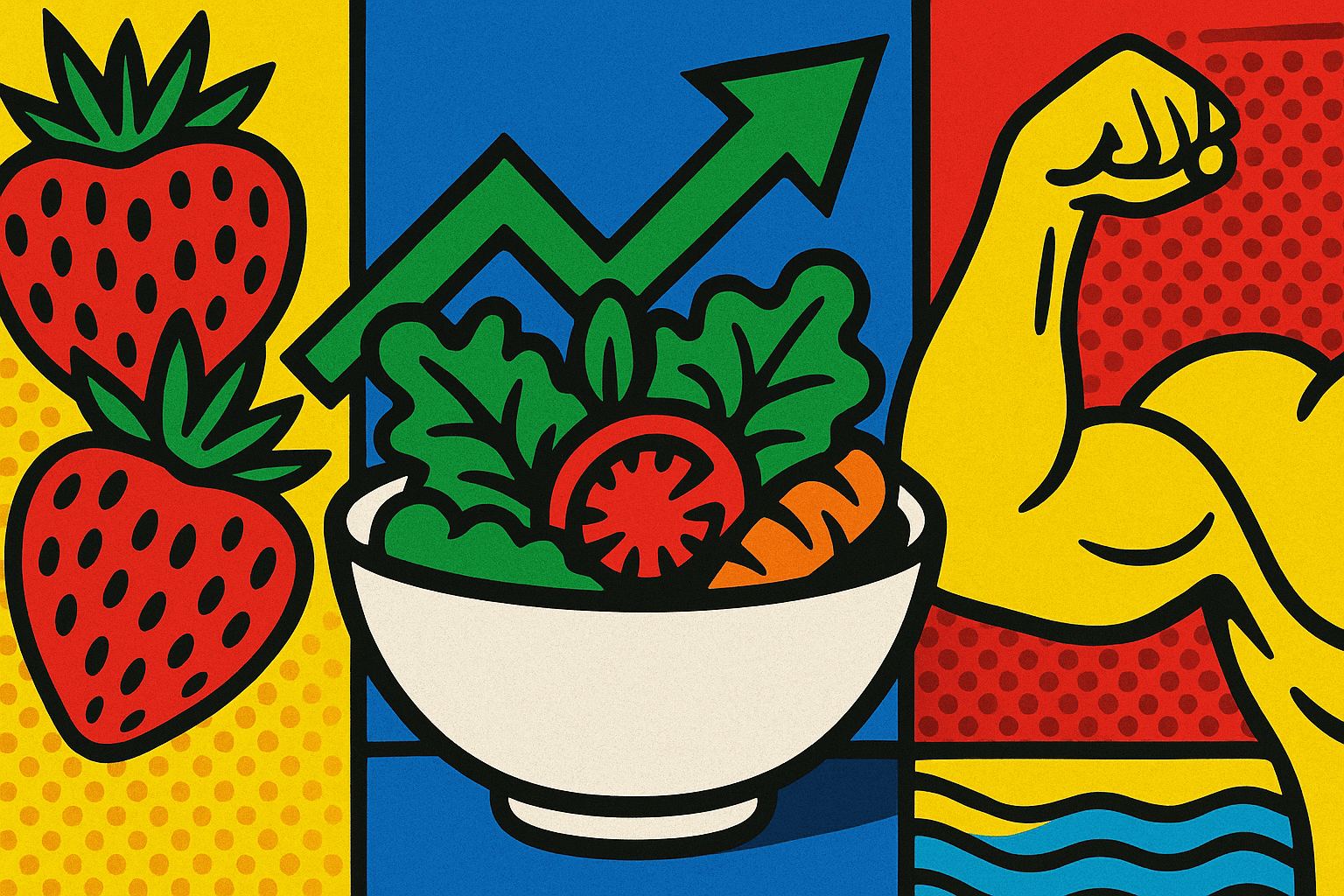Smart Eating with Diabetes: Science-Backed Strategies That Actually Work
Published on June 17, 2025

Diabetes Isn’t About Restriction — It’s About Strategy
Living with diabetes is not just about avoiding sugar — it’s about creating habits that align with your metabolism. When you eat with intention and balance, you gain energy, control, and confidence. Let’s break down science-backed strategies that make a real impact.
What Happens in Diabetes
Diabetes disrupts glucose regulation — through low insulin production (Type 1), insulin resistance (Type 2), or hormonal shifts (gestational diabetes).
Food plays a central role in managing it — not just as fuel but as information that signals your body how to handle blood sugar.
Empower Yourself:
Track your meals and responses
Use tools like glucose monitors
Focus on consistency, not perfection
The Power of Balanced Plates
Your blood sugar thrives on balanced meals that combine:
Non-starchy carbs (veggies, legumes, berries, whole grains)
Healthy fats (olive oil, nuts, avocado)
Lean protein (chicken, fish, tofu, eggs)
Why it works: This slows digestion, reducing blood sugar spikes.
Try this: Create one balanced plate each day this week and notice the impact.
Pro tip: Add lemon juice or vinegar — it may help lower the glycemic load.
Carbs: Not All Created Equal
Don’t fear carbs — choose wisely.
Best choices:
Non-starchy vegetables
Beans, lentils
Berries
Whole grains (quinoa, oats)
Be mindful with:
Bread, rice, pasta
Potatoes and corn
Avoid/minimize:
Sugary drinks
White bread
Pastries and cereals
Pro strategy: Eat carbs with protein or fat to slow sugar absorption.
Real-world example: Avocado toast + egg > plain toast.
Tech tip: Use a CGM or app to track your response to different foods.
Meal Timing and Frequency
Blood sugar loves rhythm.
Eat every 4–5 hours, including a solid breakfast
Front-load meals earlier in the day when insulin sensitivity is higher
Sync meals with meds and movement
Evening tip: Lighter, earlier dinners help reduce overnight glucose spikes.
Visual Trick: The Plate Method
No need to count calories — just structure your plate visually:
Half = non-starchy vegetables
1/4 = lean protein
1/4 = whole-grain or starchy carbs
Add a good fat like avocado or olive oil
Pro tip: Use smaller plates to encourage natural portion control.
Dining out: Box half your meal before you start eating.
What About Fruit?
Yes, you can eat fruit:
Best picks: Berries, apples, pears, kiwi, citrus
Timing tip: Earlier in the day when insulin sensitivity is better
Pairing tip: Combine with fat/protein — e.g., apple + almond butter
Avoid juices and fruit smoothies (they spike sugar fast)
Smart Snacking
Snacks should combine protein + fiber or fat:
Greek yogurt with chia
Celery with peanut butter
Boiled egg + cherry tomatoes
Hummus + veggie sticks
Handful of nuts + a clementine
Avoid “naked” carbs like crackers or plain fruit.
Keep 2–3 go-to combos handy at home or on-the-go.
Drink Smarter
Liquid sugar is your enemy.
Avoid:
Sodas, juices, sweetened lattes, flavored teas
Choose instead:
Water with lemon
Herbal teas
Black coffee or with unsweetened almond milk
Sparkling water with frozen fruit cubes
Hydration habit: Sip water throughout the day — not just at meals.
Exercise + Food = Metabolic Gold
Physical activity boosts glucose uptake by your muscles.
Best practices:
Walk after meals (even 10 minutes helps)
Strength train twice a week to increase insulin sensitivity
Time workouts 30–90 mins after eating
Prep tip: Have snacks on hand (banana, trail mix) in case sugar dips.
Final Thought
Managing diabetes isn’t about eating less — it’s about eating smarter.
When meals are balanced and rhythmically timed, food becomes a tool — not a threat.
Next step: Try one small change this week:
High-protein breakfast
Veggie-packed lunch
Evening walk after dinner
New mantra: Don’t aim for perfection — aim for sustainable patterns.
Your plate is your power.








